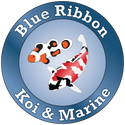Managing ammonia levels in your pond is essential for maintaining optimal water quality and ensuring the well-being of its inhabitants. Ammonia, often misunderstood and feared, can be derived from fish waste and the decomposition of organic matter, posing a threat to fish health. However, with the right strategies, you can effectively control ammonia levels in your pond. This guide explores three key approaches to managing ammonia: controlling its sources, maintaining favorable water conditions, and implementing effective management techniques. By following these methods, you can create a healthy and thriving environment for your pond's aquatic life.
- Control the Sources of Ammonia: a. Fish Waste: Monitor the feeding rate and protein level in fish food. High-protein and excessive feeding can lead to increased ammonia production. Adjust the feeding regimen and choose food with appropriate protein levels to minimize ammonia output. b. Organic Matter Decomposition: Regularly remove fecal solids, dead plant material, and uneaten food from the bottom of the pond. This reduces the decomposition process that generates ammonia. Proper pond maintenance and cleaning are crucial to prevent excessive ammonia buildup.
- Maintain Optimal Water Conditions: a. pH and Temperature: Understand the relationship between pH, temperature, and the toxicity of ammonia. Ammonia exists in two forms, ammonium ion (NH4+) and free ammonia (NH3). The toxic free ammonia increases with higher pH and temperature. Monitor and regulate pH levels to keep ammonia in its non-toxic ammonium form. b. Alkalinity and Water Changes: When adjusting alkalinity with baking soda, consider the impact on ammonia levels. Avoid adding water with a higher pH than the pond's pH, as it can convert ammonium to toxic ammonia. Perform regular water changes to dilute ammonia and maintain water quality.
- Implement Effective Ammonia Management Techniques: a. Short-Term Solutions:
- Water Changes: Conduct regular water changes to remove ammonia quickly. Ensure the replacement water is safe and matches the pond's pH and temperature.
- Ammonia-Removing Chemicals: Use ammonia-removing products like Amquel+ or Zeolite. Follow the recommended dosages carefully to prevent overdosing and maintain a healthy balance.
- Enhance Biological Filtration: Improve the efficiency of the pond's biological filtration system. This promotes the growth of beneficial bacteria that help convert ammonia into less harmful compounds.
- Reduce Feeding: Control the amount of food given to the fish to minimize excess ammonia production. Feeding in moderation prevents overloading the pond with fish waste.
- Remove Debris: Regularly clean and remove debris from the pond, including dead fish, plant material, and excess food. This prevents organic matter decomposition and subsequent ammonia release.
- Adjust Fish Load: Avoid overstocking the pond with too many fish. Maintaining an appropriate fish-to-water ratio helps prevent excessive ammonia buildup.
- Introduce Beneficial Bacteria: Add products like Microbe-lift PL that contain beneficial bacteria. These bacteria aid in the natural breakdown of organic waste, reducing ammonia levels.

